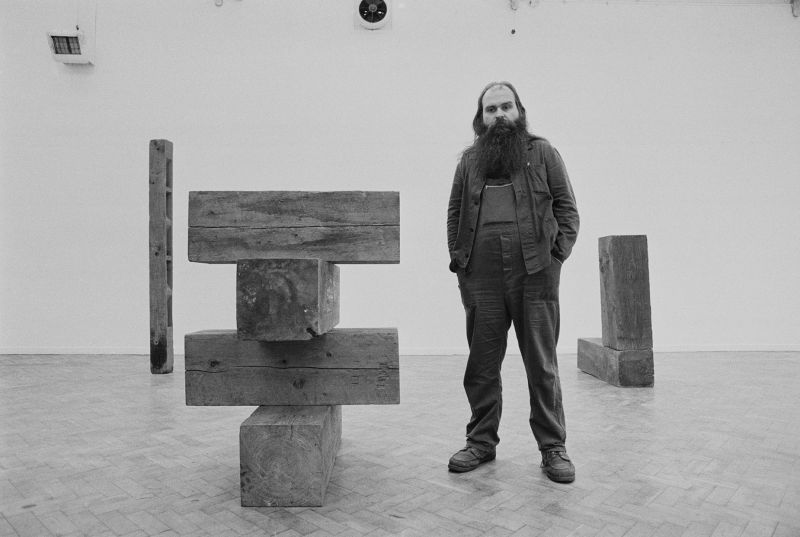
The Enigmatic Legacy of Carl Andre: A Journey Through Minimalism and Controversy

Exploring the life and work of Carl Andre, an influential figure in the Minimalist movement, and the controversy surrounding his legacy.
The Early Years and Artistic Development
Carl Andre, a significant figure in the world of contemporary sculpture, has left an indelible mark on the art world with his minimalist approach and material-driven creations. Born in 1935 in Quincy, Massachusetts, Andre's artistic journey was shaped by his early experiences and encounters with art. His father, George Andre, a skilled freshwater plumbing designer, instilled in him a deep appreciation for craftsmanship and the beauty of raw materials.
American artist and sculptor Carl Andre pictured at London's Whitechapel Gallery in London on March 15, 1978. Andre’s work often consisted of industrially fabricated forms made from simple, raw material — such as metal, granite, wood, and brick — arranged in free-standing patterns.
Growing up in an environment where creativity and craftsmanship intertwined, Andre's formative years were influenced by his father's love for poetry and his own affinity for working with wood. These early influences laid the foundation for his future endeavors as both a visual artist and a poet. His time at Phillips Academy and later at Kenyon College, albeit brief, provided him with crucial insights that would steer his artistic trajectory.
It was during a visit to the UK and a consequential encounter with Stonehenge that Andre's fascination with sculpture was ignited. This pivotal moment led him to New York City in 1957, where he would embark on a transformative artistic journey, forever altering the landscape of contemporary sculpture.
Defining the Minimalist Movement
In the late 1950s, Carl Andre's artistic pursuits intersected with the burgeoning Minimalist movement, laying the groundwork for his iconic contributions to the art world. His collaboration with artist Frank Stella and the subsequent evolution of his 'Element' series marked a significant departure from traditional sculptural practices. Through pre-cut pieces of wood arranged in rhythmic patterns, Andre sought to transcend the confines of human association and allow matter to speak for itself.
The 'Plains and Squares' series, characterized by thin metal plates arranged on the floor to create geometric patterns, exemplified Andre's commitment to minimalism and spatial engagement. These visually simplistic yet conceptually profound works challenged conventional notions of sculpture and invited viewers to interact with the art on a physical and perceptual level.
An installation of square zinc plates by the sculptor Carl Andre is pictured at the Ace Gallery in Beverly Hills on October 19, 2007.
Andre's minimalist ethos, rooted in the purity of matter and the liberation of form from extraneous ideas, redefined the parameters of sculpture and language. His unwavering dedication to lucid geometric arrangements and unaltered industrial materials set him apart as a pioneering force in the Minimalist movement.
Navigating Controversy and Legacy
Despite his groundbreaking contributions to the art world, Carl Andre's legacy is overshadowed by the controversy surrounding the tragic death of his wife, the artist Ana Mendieta. The circumstances of Mendieta's fatal fall from their apartment in 1985 have cast a lingering shadow over Andre's career, sparking intense scrutiny and public outcry.
Acquitted of the charge of second-degree murder in 1988, Andre's artistic trajectory was profoundly impacted by the aftermath of the incident. Subsequent exhibitions of his work have been met with protests and fervent calls for accountability, as critics and activists demand recognition of Mendieta's life and the circumstances of her untimely death.
Throughout the tumultuous chapters of his career, Andre remained steadfast in his artistic pursuits, creating over two thousand sculptures and an equal number of poems. His unwavering commitment to pure matter and geometric precision defined his enigmatic legacy, leaving an indelible imprint on the world of contemporary art.









